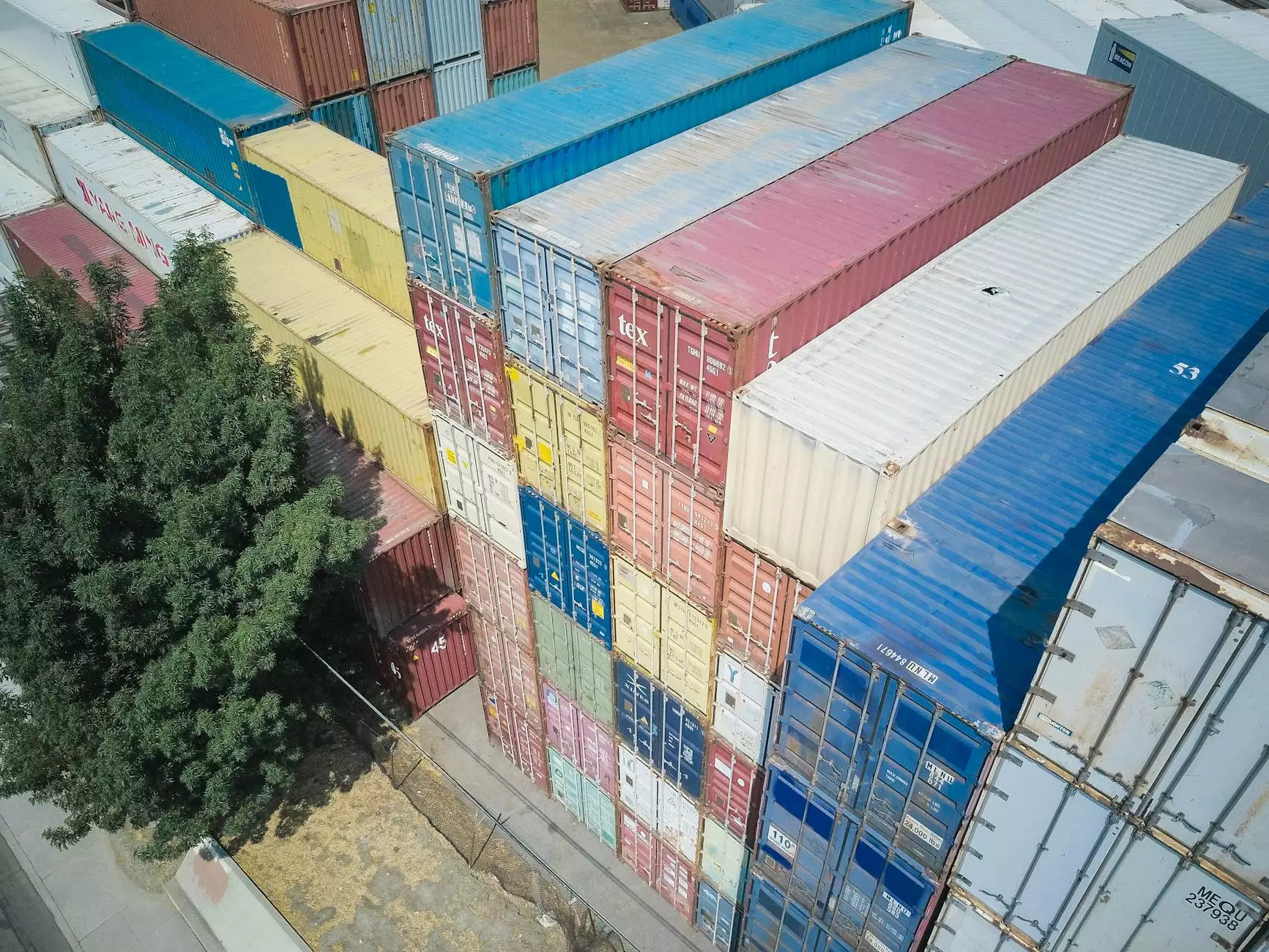Understanding Air Freight Rates per Kg: A Comprehensive Guide

In today's globalized economy, businesses rely heavily on efficient transportation methods to ensure their products reach customers on time and intact. Among various logistics solutions, air freight stands out for its speed and reliability. However, one of the critical factors that businesses must consider when opting for air freight services is the air freight rates per kg. This article will explore everything you need to know about these rates, what influences them, and how to optimize your logistics strategy.
The Importance of Air Freight in Modern Business
Air freight plays a crucial role in international trade and rapid product delivery. This mode of transport offers numerous advantages, including:
- Speed: Air freight is the fastest shipping method, enabling businesses to deliver products quickly.
- Reliability: Flights are less prone to delays compared to other transport modes.
- Global Reach: Almost every country has access to air transportation, allowing businesses to reach customers worldwide.
- Security: High-security measures are in place for air cargo, reducing the risk of loss or damage.
What Are Air Freight Rates per Kg?
Air freight rates per kg refer to the cost incurred to transport goods by air, calculated based on weight. Typically, these rates are expressed as a currency amount per kilogram. Understanding these rates is essential for businesses that want to budget their shipping costs accurately. Several factors influence these rates, which we will discuss in detail.
Factors Influencing Air Freight Rates per Kg
Understanding the factors that affect air freight rates is vital for making informed logistics decisions. Here are the primary considerations:
1. Weight and Volume of Cargo
The most crucial determinant of air freight rates is the weight of the cargo. Typically, air freight companies will charge based on either the actual weight or the volumetric weight, whichever is higher. Volumetric weight is calculated using the dimensions of the shipment and reflects the space it occupies on the aircraft. This method ensures that carriers optimize their space and resources efficiently.
2. Airline and Routing
The choice of airline and flight routing can significantly impact air freight costs. Direct flights may be pricier, but they reduce travel time, while connecting flights might lower costs at the expense of delivery speed.
3. Origin and Destination Airports
The geographical location of shipping centers plays a pivotal role in determining air freight rates per kg. Some airports might have higher tariffs due to demand, service level, and local regulations. It’s essential to compare rates from different airports to find the most economical options.
4. Fuel Prices
Like all transportation methods, air freight is subject to fluctuations in fuel prices. When fuel prices rise, so do air freight rates, as carriers pass on these operational costs to shippers.
5. Seasonality and Demand
Certain times of the year, such as holidays and major shopping seasons, see an uptick in shipping demand, which can spike rates. Planning shipments during off-peak seasons can lead to significant savings.
6. Service Types
Air freight carriers provide various service levels, from economy to express shipping. Selecting a more urgent service will reflect higher rates. Understanding your customer's needs will allow your business to choose the right balance between service and cost.
How to Calculate Air Freight Rates per Kg
Calculating air freight costs can be straightforward if you understand the methodology. Here’s a step-by-step approach:
- Weigh your cargo: Measure the actual weight in kilograms.
- Calculate volumetric weight: Use the formula:
Volumetric Weight (kg) = (Length x Width x Height) / 5000
where dimensions are measured in centimeters. - Determine the chargeable weight: Choose the higher of actual weight or volumetric weight.
- Get a rate quote: Contact freight carriers or use online calculators to get rates based on your chargeable weight.
- Calculate total costs: Multiply the chargeable weight by the air freight rate per kg.
Tips for Optimizing Air Freight Rates
To minimize your logistics expenses while maintaining service quality, consider the following strategies:
- Negotiate Rates: Build strong relationships with freight forwarders and negotiate better rates based on your shipping volume.
- Consolidate Shipments: Combine smaller shipments into a larger one to benefit from lower rates.
- Choose the Right Carrier: Conduct thorough research to ensure you select the carrier that offers the best balance of service and price.
- Plan Ahead: Booking services in advance allows for better rates and preferred shipping options.
- Stay Informed: Regularly update yourself on market trends, fuel prices, and demand fluctuations that could impact rates.
Role of Shipping Centers in Air Freight Services
Shipping centers play a pivotal role in the efficiency and effectiveness of air freight operations. They serve as critical hubs for consolidating and dispatching goods. Understanding the functions of shipping centers can help businesses leverage them for better rates and services.
Key Functions of Shipping Centers
- Consolidation: Shipping centers combine cargo from various businesses, which can lead to lower per kg air freight rates.
- Documentation: They assist in the preparation of necessary shipping documents, ensuring compliance with regulations.
- Distribution: They handle the sorting and distribution of goods to various destinations efficiently.
- Tracking and Monitoring: Many shipping centers offer real-time tracking services, enhancing transparency in the shipping process.
Understanding Transportation in Air Freight
Transportation modes in air freight encompass not just the air transport but also the entire logistics chain that leads to effective delivery. Here are some key aspects:
Types of Transportation Services
- Direct Air Freight: Quickest method with no stops between the origin and destination.
- Consolidated Air Freight: Cargo from multiple customers is grouped together, reducing costs.
- Pick-Up and Delivery Services: These include transporting goods to the shipping center and final delivery from the airport.
Evaluating Transportation Options
When choosing a transportation option for your air freight needs, consider the following:
- Speed Requirements: Urgent deliveries may necessitate direct services, while less urgent shipments can utilize consolidated options.
- Cost Efficiency: Weigh the costs versus the benefits of various transportation methods.
- Reliability: Opt for providers with proven reputations for timely deliveries and minimal disruptions.
Airports: The Backbone of Air Freight
Airports serve as critical nodes in the air freight network. The capacity, infrastructure, and services critical to efficient operations significantly influence shipping costs and services.
Choosing the Right Airport
When selecting an airport for air freight, consider:
- Infrastructure: Ensure the airport has logistic services to accommodate all shipping needs.
- Accessibility: Assess the airport's connectivity to other transportation networks.
- Customs Services: A well-equipped customs facility can expedite clearance, reducing delays and storing costs.
Conclusion
Understanding the nuances behind air freight rates per kg is essential for businesses seeking efficient logistics solutions. By considering the various factors that influence rates, optimizing transportation methods, and leveraging shipping centers and airports effectively, companies can navigate the complexities of air freight with expertise. Being proactive in these areas will not only save costs but also enhance service delivery, ensuring customer satisfaction. Remember, in the world of logistics, knowledge is power, and being informed will keep your business ahead of the curve.
For more insights and professional air freight services, visit Cargobooking.aero.









